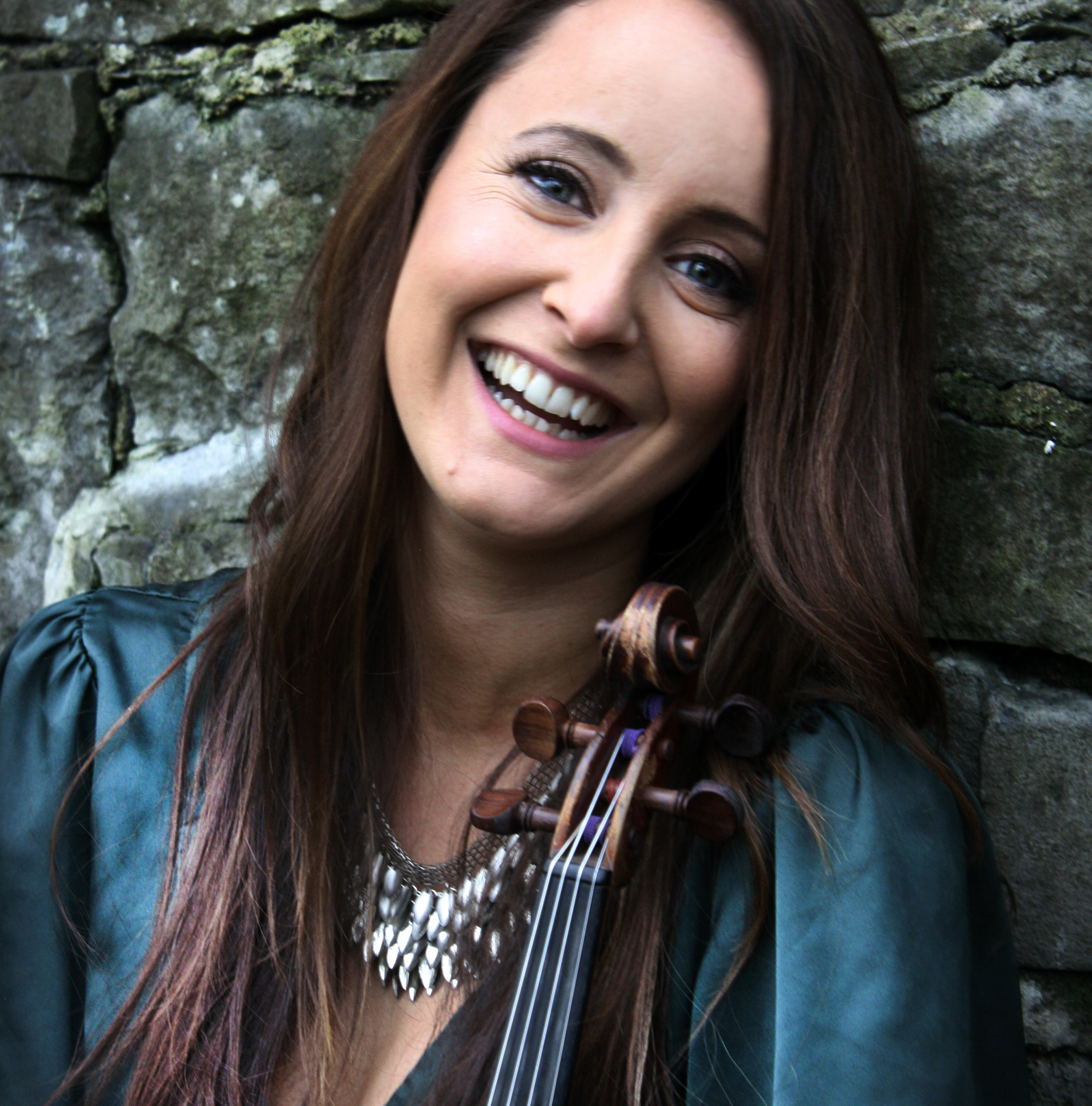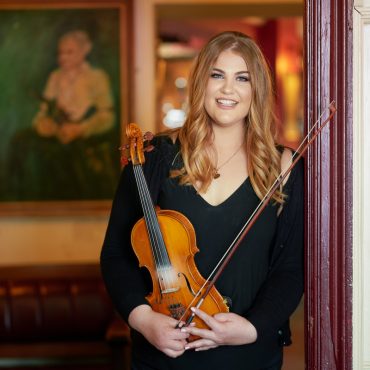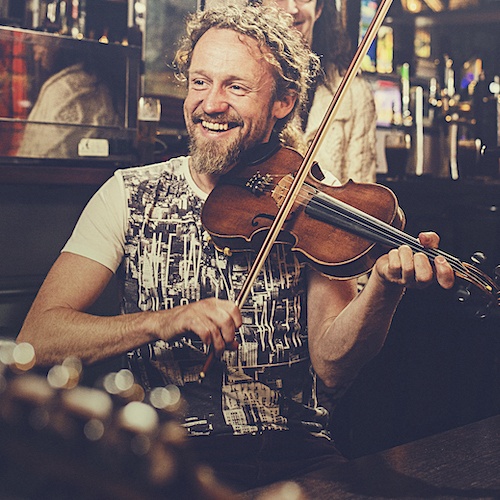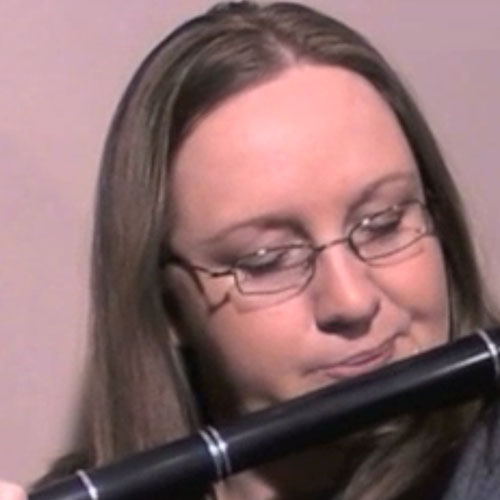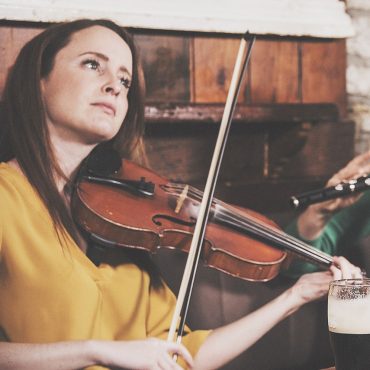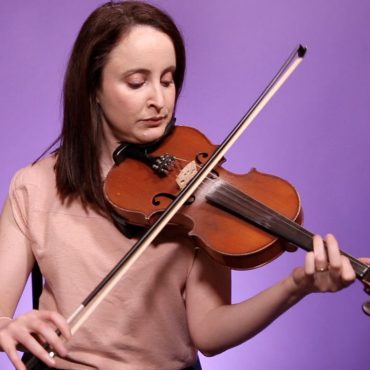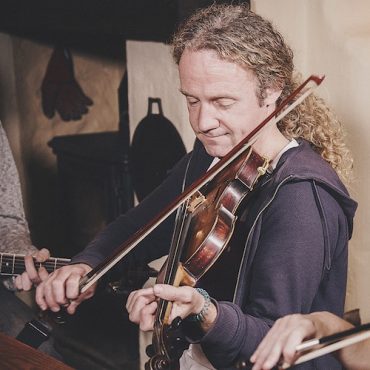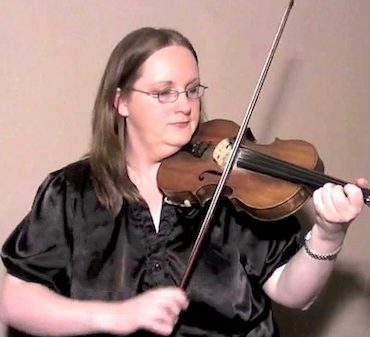1. Bow Hold
First of all when using the bow you must tighten it by turning the screw at the bottom of the bow clockwise. Don’t tighten it too tight just enough for there to be approximately 6-8 mm between the hair and stick. Also make sure to loosen bow when finished playing.
When learning to properly place your right hand, hold the bow stick with your left hand. Be careful to not touch the bow hair with your fingers. Oil from your hands can get onto the bow hairs and this will make them loose the friction needed when connecting with the strings to make sound. It is also important to keep the bow well rosined. Place your thumb on the underside of the bow stick, next to where the frog ends. Usually, there will be a small space between the frog and the leather or wire finger grip. That’s the spot where you want to place your thumb.
Next, the middle finger is placed opposite the thumb on the bow stick, with the ring finger placed right next to it. Let your middle and ring finger relax so that they curve over the top of the bow and rest on the frog. Then, place the tip of your little finger on top of the bow stick, slightly away from the ring finger. It’s very important that the little finger is curved so that it points down onto the top of the bow stick. If it is held straight, you will loose a lot of control of the bow.
Finally, place your first finger on the finger grip, contacting the bow close to the middle knuckle. Keep the first finger curved and pointing slightly back toward the other fingers on the bow.
As an exercise, hold the fiddle bow vertically in your right hand, start to crawl your fingers up to the tip of the bow and back down without the help of your left hand. This exercise will help strengthen and improve flexibility in your fingers.
2. Fiddle Hold
The fiddle is held horizontally (parallel with the floor) and is angled to the left of a straightforward position. Place the fiddle on your left collarbone and rest the left side of your jaw on the chin rest. Shoulder rests are very helpful to hold up the fiddle.
The elbow should be under the center of the fiddle. Keep the wrist gently rounded. Avoid resting the wrist against the fiddle neck. The thumb should be opposite the first or second finger. Maintain a curved, open space between the thumb and index finger.
If you stand when playing, stand straight with feet shoulder width apart, and with relaxed knees. If you prefer to sit, use a chair with a firm base, and sit up straight and sit towards the front of the chair.
3. Bowing
It is very important at the start to bow correctly as this may hinder your ability to play faster tunes and do bow ornamentation later in your playing. When bowing you must use your wrist and not your arm. When practicing, do long bow strokes starting with the bottom of the bow on a string, your wrist should be high here. Then bringing the bow down slowly with your elbow facing directly at the ground, it should not move backwards at all. When the bow is being pulled slowly down, your wrist gradually moves in and make sure you are bowing straight across the string and not sideways. Do this over and over and getting faster and faster. The swing, lift, interpretation, ornamentation and rhythm comes from the bowing and the bow wrist.

